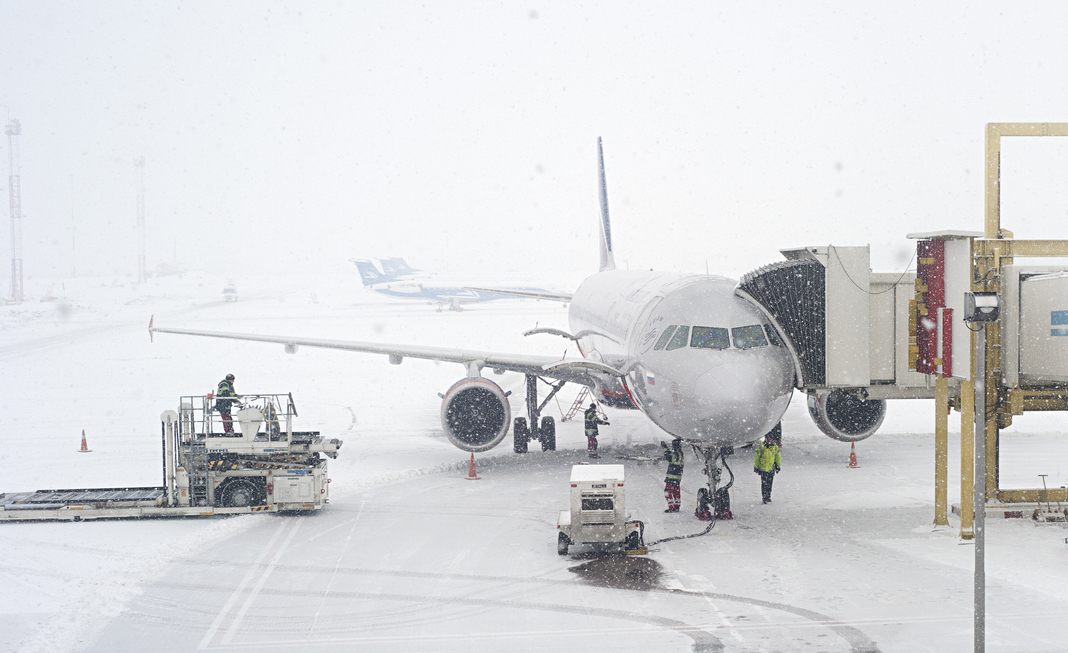Best Practices for Fueling Aircrafts in the Winter

Flight operations in winter can be adversely affected by near and below-freezing temperatures, fast-moving fronts, strong winds and wind gusts, icing conditions and blowing snow. To that end, to ensure the safety of pilots, passengers, ground crew and citizens, flying in winter requires special cold weather procedures — from aircraft preparation to operation.
Let's take a closer look at fueling and what best practices pilots and ground crew can take to ensure safe flying throughout the winter months.
When to Fuel Aircraft
The weather forecast is integral to the aircraft fueling process in any season, but it’s especially important if snow, freezing precipitation and/or freezing fog is expected. Timing is everything, so having an open-ended fuel request to fuel aircraft isn’t a good idea and can lead to problems and safety issues.
One problem — you wouldn’t want the aircraft fueled just prior to departure if there is snow or freezing precipitation unless you’re planning on de-icing. And the second problem — you don’t want to fuel in snowy conditions and then return the airplane to the hangar.
Depending on the amount of time between fueling and departure, it’s likely that the snow collected on the aircraft during the fueling process would melt while the airplane was in the hangar. When the aircraft leaves the hangar, the melted snow will likely refreeze as soon as it hits the cold air. This could prove dangerous — if not disastrous — on the takeoff roll if you are not specifically looking for ice on the wings or tail.
If snow melts on the aircraft while in the hangar, thoroughly drying the aircraft off with towels before departure is the course of action to take. Considering the possible dangers of undetected ice on the wings or tail, being extra cautious is time well spent.
Fuel Contamination
Fuel contamination is always a possibility in cold temperatures despite pumping facilities with solid filtration equipment and quality fuel delivery from aviation fuel providers. Even with the highest quality fuel and filtration equipment, if an aircraft has been warm and then parked with a half-full tank in the cold, there’s the possibility of water getting in the tanks. Each time fuel is put in the aircraft’s tank — regardless of the amount — it should be tested for water and debris.
Fueling Facilities
Another hazard of fueling in cold temperatures is fueling aircraft from makeshift fueling facilities. Even refinery-sealed fuel drums can contain rust that can contaminate fuel. Take precautions and help ensure fuel integrity and safety by following these best practices:
- Make sure that fuel delivered by your fuel provider is aviation fuel and that it’s the correct grade for the aircraft’s engine.
- Where possible only fuel from modern fueling facilities.
- Fill the aircraft’s tank as soon as possible after landing. Drain fuel sumps to remove any water that may be present.
- If you’re not using modern fuel facilities for fueling, it’s vital to filter the fuel as it goes into the tank.
- Special precautions and filtering are necessary with kerosene and other turbine fuels. Check with the manufacturer for details on proper handling.
Fuel Filters and Sumps
Fuel filters and sumps — including each tank sump — should be equipped with quick drains. To check that the fuel is free from contaminants, sufficient fuel should be drawn off in a transparent container.
Drain all fuel sumps on the aircraft, including individual tank sumps and take extra care when changes in temperature occur, particularly when the temperature nears freezing. Ice could be in the tanks and as the temperature rises, it could make its way into the carburetor and cause engine failure.
Water can also freeze in lines and filters causing a stoppage. If fuel does not drain freely from sumps, this could mean that the line or sump is blocked with either sediment or ice. Anti-ice additives can help remedy the problem.
Blue Skies Ahead
Flying in colder weather and other winter conditions can be intimidating but it’s not necessarily less safe than flying in conditions associated with other seasons such as summer thunderstorms. Fueling efforts may take more preparation on the part of pilots and ground crew, but in terms of safety, it’s well worth the time and trouble especially considering fuel powers the engine.